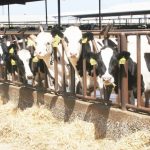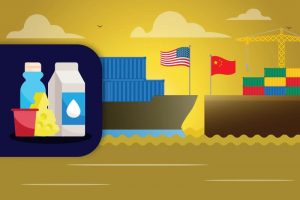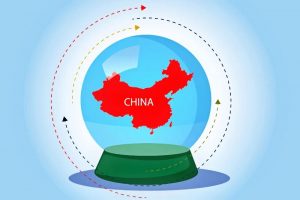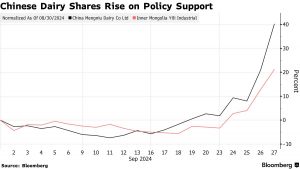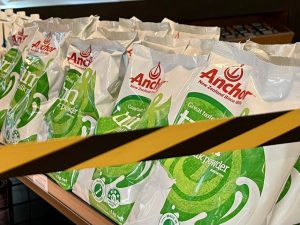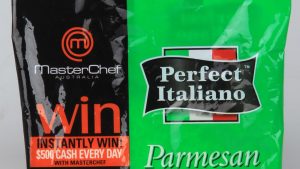
Milk in ancient China
Milk was not part of the traditional Chinese diet. In the 19th century during the Qing dynasty, it was introduced by foreign missionaries and traders who brought with them their eating habits.
But it was not very well received, they considered it impure, inappropriate and strange; moreover most were lactose intolerant. All bad.
Finally, its consumption was limited to urban areas where foreigners lived, and there the first dairy industries were established, such as:
Shanghai Dairy Company: founded in 1883 by British William Little, it was the first dairy company in China. It produced fresh milk, butter and cheese for the local and foreign markets. In 1920, it merged with two other companies to form the Shanghai Milk Products Company, which grew to 16 farms and 4,000 cows.
Tianjin Dairy Company: founded in 1906 by Frenchman Paul Doumer, it was the second largest dairy products company in China. It produced pasteurized milk, yogurt and cheese for the local and foreign markets. In 1919, it partnered with the Nestlé Company to expand its business.
Beijing Dairy Company: founded in 1915 by the Dane Carl Jensen, it was the third largest dairy company in China. It produced fresh milk, butter and cheese for the local and foreign markets. In 1928, it joined the Danish Cooperative Dairy Company to improve its technology and quality.
Milk in modern China
After the founding of the People’s Republic of China in 1949, the Communist government promoted milk consumption, now considering it a nutritious and health-promoting food.
The development of the domestic dairy industry was boosted, with the creation of collective farms, cooperatives and state-owned enterprises. New technologies were introduced to improve quality and safety, such as pasteurization, refrigeration and packaging.
Milk production and consumption increased considerably during the 1950s and 1960s, although they were still well below the world level.
Milk in contemporary China:
The milk boom in China followed the economic reforms initiated in 1978, which opened the country to the international market and the private sector.
The dairy industry benefited from economic growth, increased purchasing power, demographic change and cultural change.
With a population of nearly 1.4 billion and an expanding middle class with greater awareness of nutrition and health, demand soared among Chinese consumers, who craved a more varied and Westernized diet.
The supply of milk multiplied with the entry of new players, such as private companies, multinationals and small producers. The variety of dairy products expanded with the introduction of new formats, flavors and ingredients.
China became the world’s third largest producer of dairy products, surpassed only by India and the United States. Per capita milk consumption increased from 25 kilograms in 2006 to 36 kilograms in 2019.
Milk in today’s China
The Chinese dairy industry faces several issues that put its future at risk, and make it vulnerable to international market fluctuations, trade barriers or sanitary crises.
The melamine-adulterated milk scandal in 2008 caused the death of six babies and the poisoning of thousands more. This severely damaged consumer confidence in the quality and safety of domestic dairy products.
Also, environmental impact is an issue that the Chinese dairy industry must watch, just like those around the world.
On the other hand, they are dependent on imports of milk, raw materials and inputs such as fodder or cattle from New Zealand, Australia or the United States.
China is investing in new technologies such as traceability, AI and biotechnology to improve the efficiency, quality and safety of dairy products, and is collaborating with strategic partners such as Alibaba and Fonterra to integrate online sales, acquire data on consumer preferences and optimize the supply chain.
They are also making a commitment to society and the environment, implementing good practices, and supporting small producers.
Milk Made in China:
The three leading Chinese dairy companies represent 60% of their market and have a strong national and international presence:
- Yili Group: founded in 1956, it is the largest dairy company in China and Asia. With more than 60,000 employees and over 20,000 outlets, it produces liquid milk, milk powder, yogurt, ice cream, cheese and other products. In 2022, its turnover was US$ 13.5 billion.
- Mengniu Dairy: founded in 1999, it is the second largest dairy company in China and Asia. With more than 40,000 employees and more than 10,000 points of sale, it produces fluid milk, powdered milk, yogurt, ice cream, cheese and other products. In 2022, its turnover was US$ 11 billion.
- Bright Dairy: founded in 1958, it is the third largest dairy company in China and one of the oldest. It has more than 30,000 employees and more than 5,000 points of sale. It produces fluid milk, powdered milk, yogurt, ice cream, cheese and other products. In 2022, its turnover was U$S 4.5 billion.
According to USDA estimates, China had about 9 million dairy cows in 2020; and according to statistics from China’s Ministry of Agriculture and Rural Affairs (MARA), it was about 16 million in 2019.
How China influences the international dairy market.
Chinese behavior in the international dairy market is influential and dynamic. They are the world’s largest importer, and they demand quality, variety and safety.
Between January and June 2023, China imported a total of 1.7 million tons of dairy, worth $7.5 billion.
Its main suppliers were New Zealand, with a 46% market share, Australia, with 16%, and the European Union, with 15%.
These countries are now reeling from competition from other origins, price volatility, declining demand or sanitary restrictions.
In the West, we love milk and we were able to make the Chinese value it as much as we do. This change was possible thanks to the exchange and cooperation between the West and China, which shared knowledge, technologies and experiences.
The West brought tradition and quality in the dairy sector, China brought dynamism and innovation. Together we have created a global dairy market that benefits us all.
Milk is a source of life and well-being for millions of people around the world and has also become a symbol of friendship and collaboration between two mutually enriching cultures.
Dairy is good for you!
With information from exportapymes.com, OCLA, Library of the National Congress of Chile and EDN Archive.


